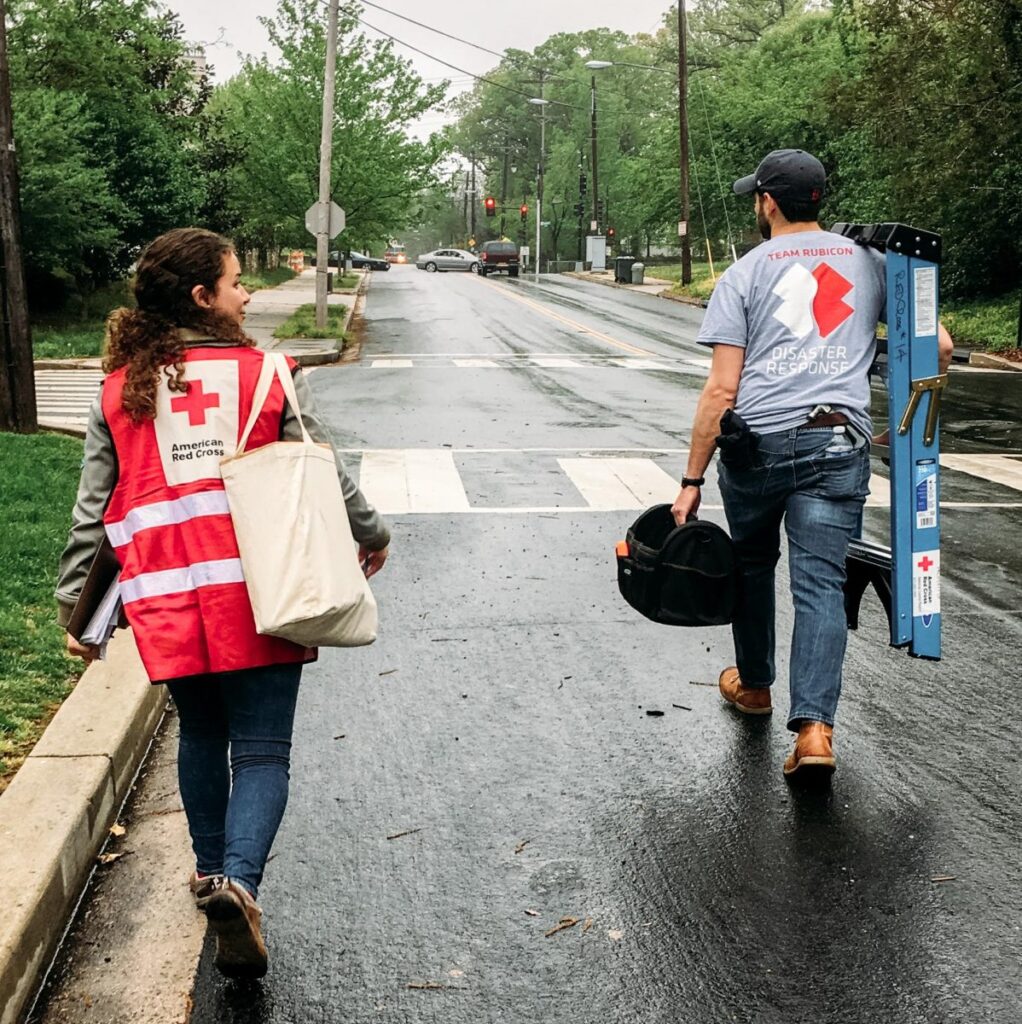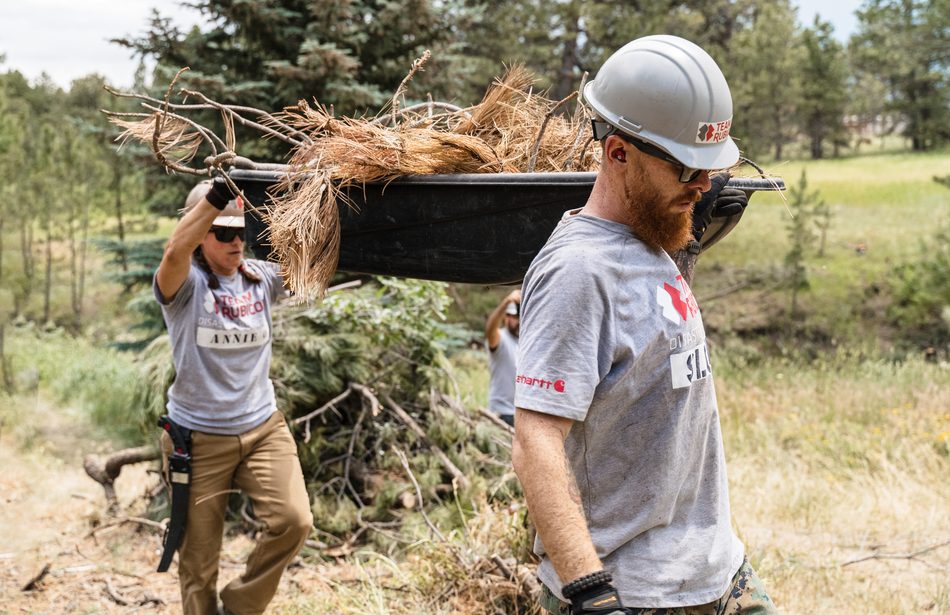For years, Team Rubicon and the American Red Cross have stood shoulder to shoulder in the arena, Red Cross feeding and sheltering disaster survivors while Team Rubicon volunteers—Greyshirts—work to get them back into their homes. Now, the two organizations will be working together in a novel new way, with the hopes of stopping—or at least diminishing—some disasters before they even start.
On February 22, the American Red Cross announced a $200,000 grant to Team Rubicon that will enable the veteran-led disaster relief nonprofit to execute wildfire mitigation services in Grand County, CO.

Grand County has been hit hard by fires in the recent past. In October of 2020, the East Troublesome Fire began here, burning more than 193,000 acres and destroying or damaging more than 365 homes and more than 210 outbuildings.
Public lands, including forests, comprise roughly 75% of Grand County. Here, at lower elevations, forests full of aspen and lodgepole pine—prone to pine beetle kills and wind events—spread across the landscape. Higher up, the forests transition to fir and spruce and, eventually, high alpine terrain. While keeping up with removal of dead and dying trees—prime fuel for forest fires—is imperative and difficult, so is removing potential fuel from around homes.
To help mitigate against future fires, and working at the direction of Grand County Emergency Management and the Grand County Wildfire Council, Team Rubicon will launch large-scale mitigation operations for several Grand County communities in June, including Winter Park Highlands and Alpine Park, both designated Very High Hazard wildfire areas. Over the course of the operation Team Rubicon Greyshirts will provide home ignition zone assessments, and then work to address the issues they find. They’ll clear potential fire fuel sources from around homes to establish fire-safe perimeters and create buffers between property and future fires.
“This is less about cutting a swath of the forest out and more about doing the work that is proven to save life and property,” said Greyshirt and Mitigation Project Manager Duane Poslusny.
Instead of working from the forest in, Greyshirts will be working from the homes out. According to Poslusny, the area zero to five feet from any home should be the no-fuel, no-flame zone. Then, the area five to 30 feet from the home should be the “lean and green” zone. Removing fuel sources such as pine needles and dead or dying trees from around the home reduces the risk that an ember that does land on the property will ignite debris that could cause the entire home to catch fire. It’s all about strategic fuel reduction.

“If you have five feet of fire-safe material—think rock, for example—surrounding your home, your home is much more protected against fire than it would be by a prescribed burn of the nearby forest. You could clear-cut everything in your subdivision, but it won’t matter. Burning embers are going to be blown from afar,” explains Poslusny.
Greyshirts will also support Grand County’s mitigation efforts by working in some public spaces, such as thickly-wooded ravines, which are notoriously hard to reach with machinery and which fundamentally act as chimneys when fire winds pick up.
Thanks to the Red Cross grant and the support of local partners and government, all these fire and flood mitigation services will be provided at no cost to homeowners. The majority of the services will be provided by volunteers who are themselves no stranger to the hazards of wildfires: Team Rubicon expects to rely heavily on local, Colorado-based Greyshirts for much of the operation. They’ll supplement those numbers with volunteers brought in from across the U.S., especially those who have specialized expertise or experience in mitigation.
While mitigation services such as these are nothing new for Team Rubicon—in 2021 alone the organization completed 35 wildfire operations and more than 25 mitigation operations throughout the U.S.—this will be the first time it has provided mitigation services at this scale. The program is expected to provide mitigation services on 100 to 110 homes, but the program, in extension, could serve hundreds more.



